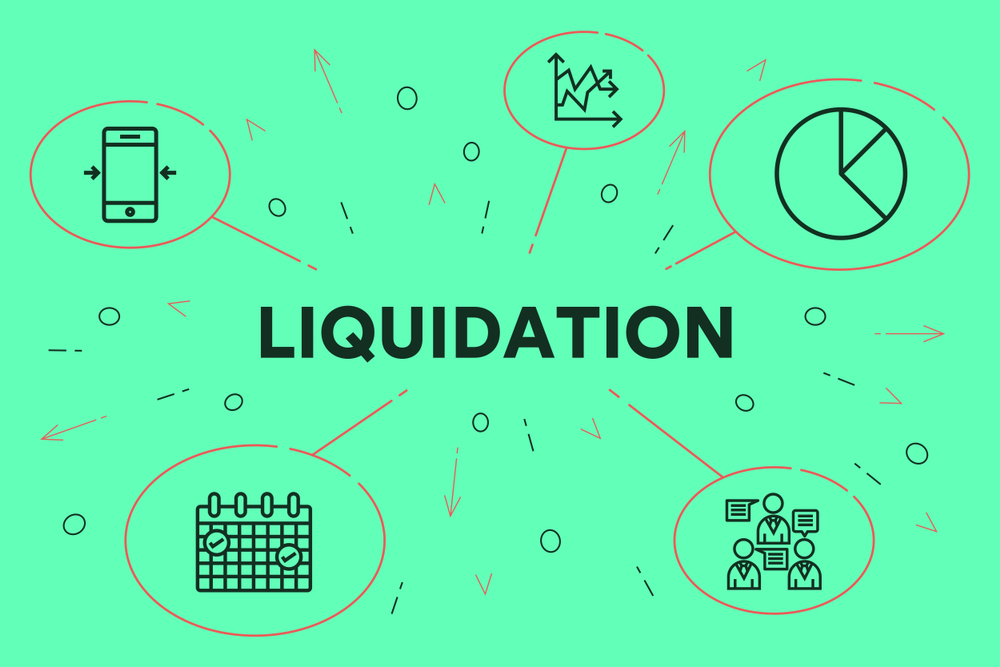Complete Guide for Business Liquidation and the Consequence

12 Smart Strategies For Your Business To Stand out In A Saturated Market
September 24, 2019
When Should You Start Planning For Your Retirement?
November 1, 2019If you’re the director of a business and your company is going into voluntary liquidation, you may be feeling overwhelmed and unsure what your next steps are. Our complete guide to business liquidation will help you identify where your company stands, what happens next, and the overall consequences of liquidation.
What happens when a company goes into liquidation?
Liquidation is the process of winding up a company and selling off the company assets in order to repay unpaid debts to creditors. During this process, the business closes down, and the business name is removed from the Australian Business Register.
There are two primary liquidation processes:
- Solvent
- Insolvent
Solvent liquidation is the less extreme of the two and is most commonly used following the retirement of the company director, or in the instance when the business no longer serves a useful purpose, therefore, becoming redundant. This type of liquidation is also commonly referred to as a MVL (Members Voluntary Liquidation)
Insolvent liquidation on the other hand applies to businesses that have been unable to fulfil their financial obligations and can no longer continue to operate. In these instances, the aim of liquidating the business is to ensure all unpaid creditors receive payment for the outstanding debts owed.
However, it is important to know that only secured creditors generally receive payouts. If you’re an unsecured creditor that’s owed money from a business in voluntary liquidation, it is unlikely you will receive compensation, and if you do it will be a minimal amount.
Why should a company choose to go into liquidation if in financial stress?
The most common reasons for opting to liquidate your business in order to end it’s operations are as follows:
- the Assets of the company are distributed evenly among creditors.
- external investigation into the affairs of a company give creditors the opportunity to receive compensation.
- enables a check and balance on shareholders and directors.
- community costs of having insolvent companies are reduced.
- dormant companies can be deregistered.
What is the general procedure for business liquidation?
In total, there are three main liquidation procedures for winding up your company. If your company is deemed insolvent, and is winding up due to failure to pay outstanding debts and bills owed, the three possible procedures your business will need to adhere to are:
- CVL (Creditors Voluntary Liquidation)
- MVL (Members Voluntary Liquidation)
- Provisional Liquidation
In any instance where a surplus of bills have not been paid, and creditors are wanting to take legal action against a company, and there is no possibility to repay the debtors to avoid a court order. The best option would be to engage in a CVL Process.
During this process, an appointed liquidator, such as Lawrence Group, would work on behalf of creditors as a whole in order to collect and realise the value of all business assets, in order to ensure all creditors receive the required compensation. The CVL increases each creditors ability to receive payment for the debts still owed to them and helps directors to ensure no more unlawful trading takes place.
When a company is not necessarily insolvent, but feel as though the business is no longer viable and useful, it may be recognised as redundant. In this case the MVL is normally the course of action to liquidate the company effectively.
Finally, provisional liquidation is the main course of action for businesses at risk of extreme damage or loss. A provisional liquidation is entered when a court appointed liquidator takes control of your business to resolve pending issues. These issues generally involve:
- Reckless Director behaviour
- Director disputes
- Debtor company hiding assets
What do liquidators do?
Appointed liquidators have a primary aim to realise a company’s assets and distribute the proceeds among creditors. What this means is that the liquidator is required to fulfil a number of tasks including:
- Acting on behalf of creditors, shareholders or directors
- Dealing with outstanding contracts and debts
- Communicating information to creditors throughout the process
- Removing the company from the Australian Business Register
- Interviewing and investigation of all parties involved
Unless there are sufficient funds within the business to pay the liquidator for their work, it’s up to the hiring party whether it’s the directors or the creditors to pay the liquidator for their service.
What are the main consequences of putting your business into liquidation?
Company consequences
Companies can continue to trade with permission, under the control of the liquidator whilst the liquidation process is being fulfilled. However, at the conclusion of liquidation, the company is dissolved and no longer exists, and operation is no longer possible.
Secured Creditor consequences
Creditors with secured proprietary claims over the company’s assets have priority for receiving payment and are generally not negatively affected by the closure of a business. It’s not uncommon for these creditors to approve the selling of assets if the liquidation recognises their claims.
Unsecured Creditor Consequences
Generally speaking, unsecured creditors aren’t able to pursue the regular methods of action to recover their owed debts once the liquidation process begins. Secured creditor claims are considered before unsecured creditor claims are even looked at. Making it highly unlikely that they will receive full payout for the money owed to them.
Shareholder Consequences
Unfortunately shareholders are at the bottom of the pile in the instance when business liquidation occurs, and shareholders will only receive their returns once the liquidator and all creditors are paid.
Australian Tax Office Consequences
There is a variety of tax implications that arise when a business goes into liquidation. Depending on the company’s unique financial situation at the time of liquidation the consequences can be drastically different. Consequences for a business may affect collection, franking, dividend and capital gains tax – which all need to be seriously accounted for in the liquidation process.
Liquidation is a complex process and can be a scary time for all parties involved. If you’re a director, shareholder or creditor and you believe a company is in financial distress, contact Lawrence Group to discuss your options and learn more about business liquidation. Our office can be reached on 9433 3288.
This article is general information only. It does not give business, accounting, taxation, financial planning or other professional advice or service. It does not consider your specific situation, objectives or needs and if personal advice is required, a detailed analysis of your particular circumstances would need to be sought. Please see our Privacy and Disclaimers page for further information.




